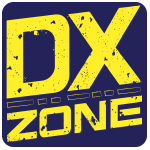The WSJT-X Development Group has announced a new “candidate release,” WSJT-X 2.0 rc1. This beta version of the popular digital mode suite incorporates many new FT8 and MSK144 features that will be of particular interest to the Amateur Radio contesting community. It incorporates all FT8 DXpedition Mode changes already developed in WSJT-X 1.9.1.
“Enhancements to the FT8 decoder ensure that in most situations decoding sensitivity is slightly better than for the old protocol. Symbol rates and occupied bandwidths are the same as before, and false-decode rates are significantly lower,” the user notes explain. “The decoding threshold for MSK144 is a fraction of a dB higher than before, owing to the slightly larger message payload and higher code rate.” WSJT-X 2.0 introduces no significant changes to the JT4, JT9, JT65, QRA64, ISCAT, Echo, or FreqCal protocols.
The new features are summarized on the WSJT-X website and in the Quick-Start Guide to WSJT-X 2.0. Contest-related changes include:
- Support for standard ARRL Field Day exchanges, such as 6A SNJ.
- Better support for North American VHF contests with improved handling of grids and /r rover call sign designators.
- Six-character locators and call sign suffix support for portable operators, focused on EU VHF contesting
- Support for standard contest exchanges in the ARRL RTTY Roundup, such as 579 MA or 559 0071.
- Support for call signs of up to 11 alphanumeric characters, to accommodate non-standard and compound call signs.
Support for new exchanges should expand the ability of contesters to use FT8 and other WSJT-X protocols during contests that allow digital contacts and where the exchanges is a traditional signal report and state/province/country.
According to the release notes, WSJT-S 2.0 also offers “significantly better sensitivity” (about 1 dB) for the WSPR decoder. In addition, color highlighting of decoded messages provides worked-before status for call signs, grid locators, and DXCC entities on a by-band basis. Color highlighting can also identify stations that have — or have not — uploaded their logs to “Logbook of The World” (LoTW) within the past year.
For the convenience of beta-testers, the –rc1 and –rc2 releases will offer receive and transmit capability for both the new FT8 protocol and the older one. Starting with –rc3 and the full release of WSJT-X 2.0, only the new protocol will be supported. zIn contrast, the new MSK144 protocol replaces the old one from the outset, with no backward compatibility.
Those participating in WSJT-X beta tests are expected to report their experiences to the developers and upgrade to the general availability release when it becomes available. Visit the WSJT-X web page for more information.
Source: ARRL Newsletter
Download WSJT-X 2 RC1
WSJT-X 2 RC1 is currently available for download only for MS Windows.
Linux and MacOS builds will be made available later.
RELEASE SCHEDULE:
Candidate releases of WSJT-X 2.0 will have built-in expiration dates after which they cannot be used. Target dates for planned releases are as follows:
- September 17: -rc1 (expires Oct 31)
- October 15: -rc2 (expires Nov 30)
- November 12: -rc3 (expires Dec 31)
- December 10: GA Full release of WSJT-X 2.0
WSJT-X 2.0-rc1 provides the first chance for beta testers to use the new 77-bit messages. It supports the old (v1.9.1) FT8 protocol as well as the new message types illustrated above. To avoid QRMing legacy FT8 users with incompatible messages they can’t decode, and to help concentrate testing activity into a few sub-bands, we recommend using the new FT8 capabilities on the 40- or 20-meter bands at dial frequencies 7.078 or 14.078 MHz. These frequencies are offered as FT8 alternatives on the drop-down frequency-selection control on the main window.
The new MSK144 is fully functional for QSOs between any two stations using a WSJT-X v2.0 release. MSK144 is not backward compatible with earlier program versions. Therefore during the testing period, approximately Sept 17 through December 10, we recommend using the new MSK144 capabilities on 50.380 MHz (IARU Region 1) or 50.280 (Regions 2 and 3).
By specific arrangement, or as soon as most regular users have upgraded to a v2.0 release, MSK144 activity can be moved back to 50.360 (Region 1) or 50.260 (Regions 2 and 3).
By design, our proposed release schedule will make WSJT-X 2.0 usable for all relevant ARRL operating events and Eurpoean VHF contests after January 1, 2019.
Source: WSJT-X release notes





